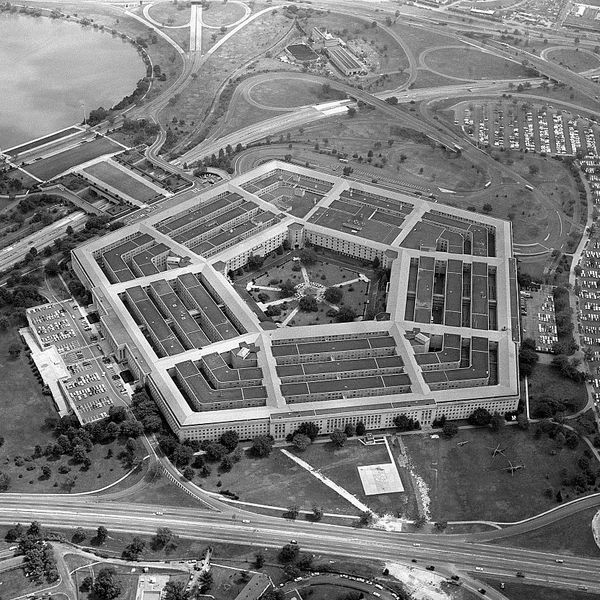OPINION — “The stark truth is that these short-term, temporary funding measures create uncertainty throughout the U.S. military and put us at a strategic disadvantage. A lack of long-term funding delays missions, undermines readiness, and inflicts unnecessary disruptions on our military families and recruitment efforts.”
That was part of Defense Secretary Lloyd Austin’s public statement last Thursday, when Congress avoided a government shutdown and passed the Continuing Appropriations and Extensions Act – or what’s known in Washington as a “continuing resolution” (CR) – which included funding for the Defense Department (DoD) through December 20.
The news that the Congress had passed this latest CR was cheered – as a better alternative to the government defaulting on its debts – but as former Defense Secretary Robert Gates pointed out last week in a Washington Post op-ed, this is the 14th fiscal year out of the last 15 that DoD has not had a regular, on time, annual budget to work with.
“Year after year of continuing resolutions, dollar-for-dollar linkage of defense and domestic spending, legislative turf fights, and parochial protection of outdated programs,” Gates said, have all contributed to the multiple challenges the U.S. military now faces.
“This is just the most recent demonstration,” Gates added, “of the yawning gap between the political rhetoric in Washington about sustaining American military strength and the stark realities on the ground.”
The trouble with the CR
Gates is correct. Most people don’t know that continuing resolutions prohibit use of the allocated DoD funds for any new activities until full-year appropriations are approved.
CRs carry statutory language that prohibits the DoD from spending the funds for new production of items that were not funded for production in fiscal year 2024 or prior years. or increasing current production rates above those stipulated in the fiscal 2024 budgets. The rules also prohibit using CR funds to initiate multi-year procurements, or to resume any project for which appropriations, funds, or other authority were not available during fiscal year 2024.
As Defense Secretary Austin put it last week, “These short-term, temporary funding measures create uncertainty throughout the U.S. military and put us at a strategic disadvantage…Functioning under a CR impedes military readiness and makes it impossible in most cases to begin or accelerate new programs. Our strategic competitors' militaries do not have to work under CRs.”
Case studies — Army, Navy and Air Force
Supporting Austin’s point, back on September 16, Secretary of the Navy Carlos Del Toro sent a letter to Rep. Ken Calvert (R-Calif.), Chairman of the House Appropriations Subcommittee on Defense, when there was talk of a six-month CR, because Congress could not reach agreement on fiscal 2025 spending.
Del Toro wrote, “This lengthy delay in new funding would force the Department of the Navy to operate at last year's funding levels with the negative consequences lasting far beyond the time frame of the CR, impeding our ability to field the force needed to defend our nation while imposing unnecessary stress on our sailors, Marines, civilians, and their families.”
Del Toro also provided a detailed list of impacted programs that included delays in the Virginia Class attack submarines which are already running over cost and behind schedule, and similar delays in construction of the initial Columbia Class strategic submarine due to postponed construction. There will also be restrictions on the funding needed to complete prior shipbuilding programs, as well as maintenance delays and potential cost increases for nuclear refueling of the aircraft carrier USS John C. Stennis.
Del Toro also said the CR would create “uncertainty in recruiting budget (which) would lead to challenges in attracting new talent to the force.”
Army Secretary Christine Wormuth laid out specific Army programs affected by a CR in a September 18 letter to Senate Appropriations Committee Chairman Sen. Patty Murray (D-Wash.).
Wormuth said the Army would have to delay as much as $8.2 billion in critical investments for recruiting, training, and capability development until the fiscal 2025 appropriation passes. One result of the delay, she said, would be the Army’s inability to improve its recruiting stations, fund digital training or recruiting bonuses and incentives – areas important to building up enlistments where the Army has been making needed “real progress.”
Wormuth’s letter also said the CR would (and it now has) postponed a $403 million planned award for a battalion-sized order of Patriot missile hardware, delayed development of the Integrated Battle Command System, planned investments in un-crewed aerial systems, the fielding of the Army’s new Next General Squad Weapon to two brigade combat teams and 23 new start procurement programs valued at $400 million.
She also said production of the Guided Multiple Launch Rocket System has been delayed along with investments to modernize Army organic industrial base facilities and military construction projects at installations in Alaska, Kentucky, Washington, Texas and Michigan.
Thanks to the CR, “the Army's inability to start new programs or realign funds to match emerging needs would reduce our purchasing power and create meaningful cost as well as schedule risk in Army programs,” Wormuth wrote Murray.
Air Force Secretary Frank Kendall, in his September 18, letter to the chairs and ranking members of the House and Senate Appropriations Committees, wrote, “A CR of any length impacts Department of Air Force readiness, hinders acceleration of the Space Force, delays military construction projects, reduces aircraft availability, and curbs modernization in our race for technological superiority.”
Kendall said the CR would prevent production increases for munition stockpiles, slows development of the B-21 bomber and new land-based Sentinel ICBM system which already has had increased cost problems. It also would halt Space Force development of software for launch and range test systems and delay initial production for Space communication security products.
There has to be a better way
Earlier, on September 7, Austin wrote a letter to Congressional leaders when the six-month CR was being contemplated. He said then that the CR would cut defense spending by more than $6 billion compared to the 2025 spending proposal, take money from new priorities and overfund programs that no longer need it. That longer CR would have stalled more than $4.3 billion in research and development projects and delayed 135 new military housing and construction projects totaling nearly $10 billion, according to Austin.
“We have already lost valuable time, having operated under 48 continuing resolutions, for a total of almost five years, since 2011,” Austin wrote. “Asking the department to compete with (China), let alone manage conflicts in Europe and the Middle East, while under a lengthy continuing resolution, ties our hands behind our back while expecting us to be agile and to accelerate progress,” he said.
Despite the burdens they place on DoD — and other government agencies — CRs have been used to fund the federal government for increasingly longer periods of time, according to the Peter G. Peterson Foundation.
From 1998 through 2010, according to the Foundation, “nearly one-third of the fiscal year, on average, was funded by a CR rather than through full-year appropriations. From 2011 through 2024, temporary measures accounted for an even larger share — 45 percent — of the year. CRs were even used to fund the entire fiscal year in 2007, 2011, and 2013.
Faced with all the circumstances created by CRs, former Defense Secretary Gates said, “Congressional leaders and committee members in both chambers should work together to end continuing resolutions for defense budgets, reform congressional procedures, enable much expanded multiyear funding of programs (necessary to revive our defense industries), expand reprogramming authorities to permit fast innovation and production, and reduce micromanagement in the name of oversight. Congress is a major obstacle to agility, innovation and modernization.”
In short, CRs have become a Congressional bad habit, creating a yearly problem for the Pentagon, and members ought to act like serious legislators and cut out the practice.
The Cipher Brief is committed to publishing a range of perspectives on national security issues submitted by deeply experienced national security professionals.
Opinions expressed are those of the author and do not represent the views or opinions of The Cipher Brief.
Have a perspective to share based on your experience in the national security field? Send it to Editor@thecipherbrief.com for publication consideration.
Read more expert-driven national security insights, perspective and analysis in The Cipher Brief











